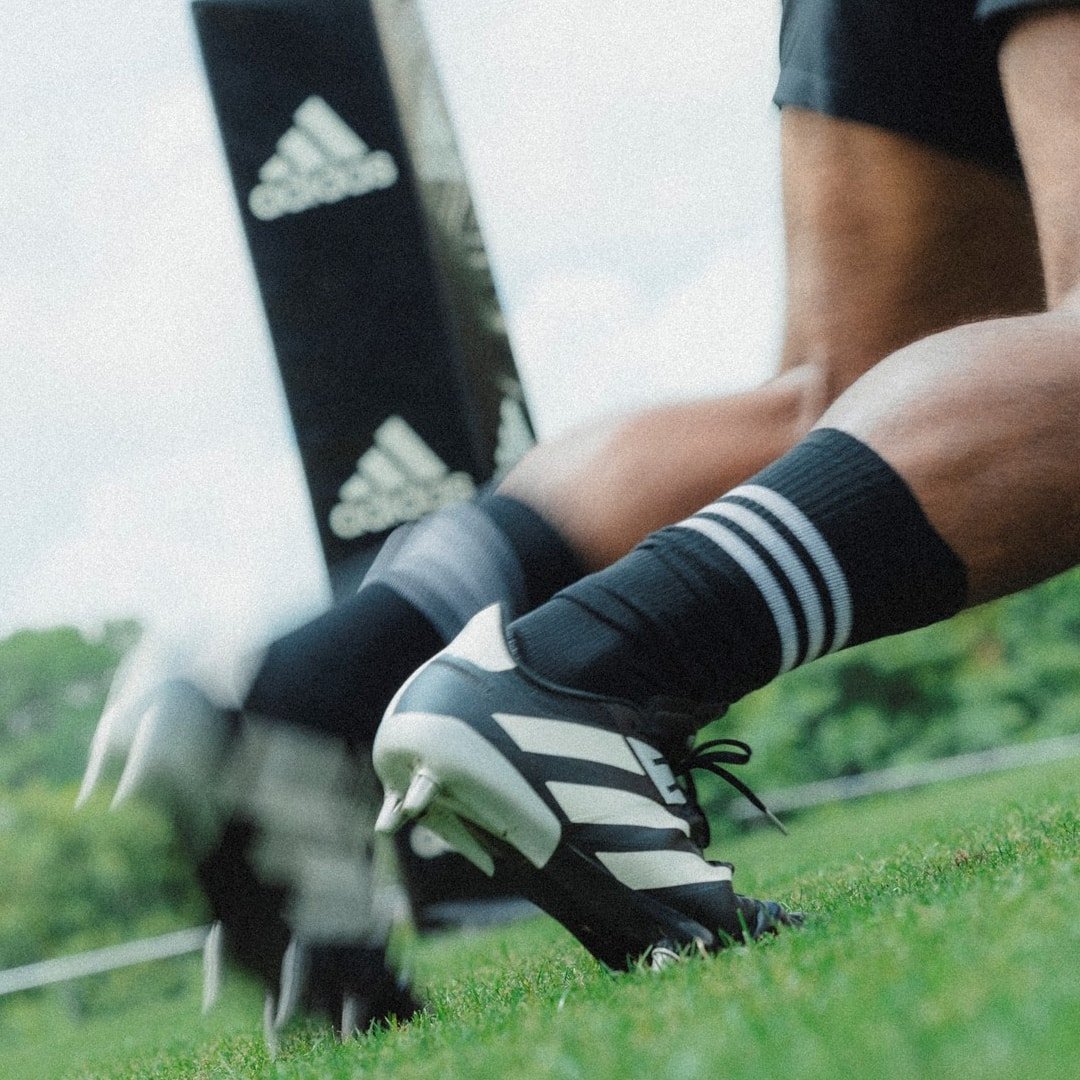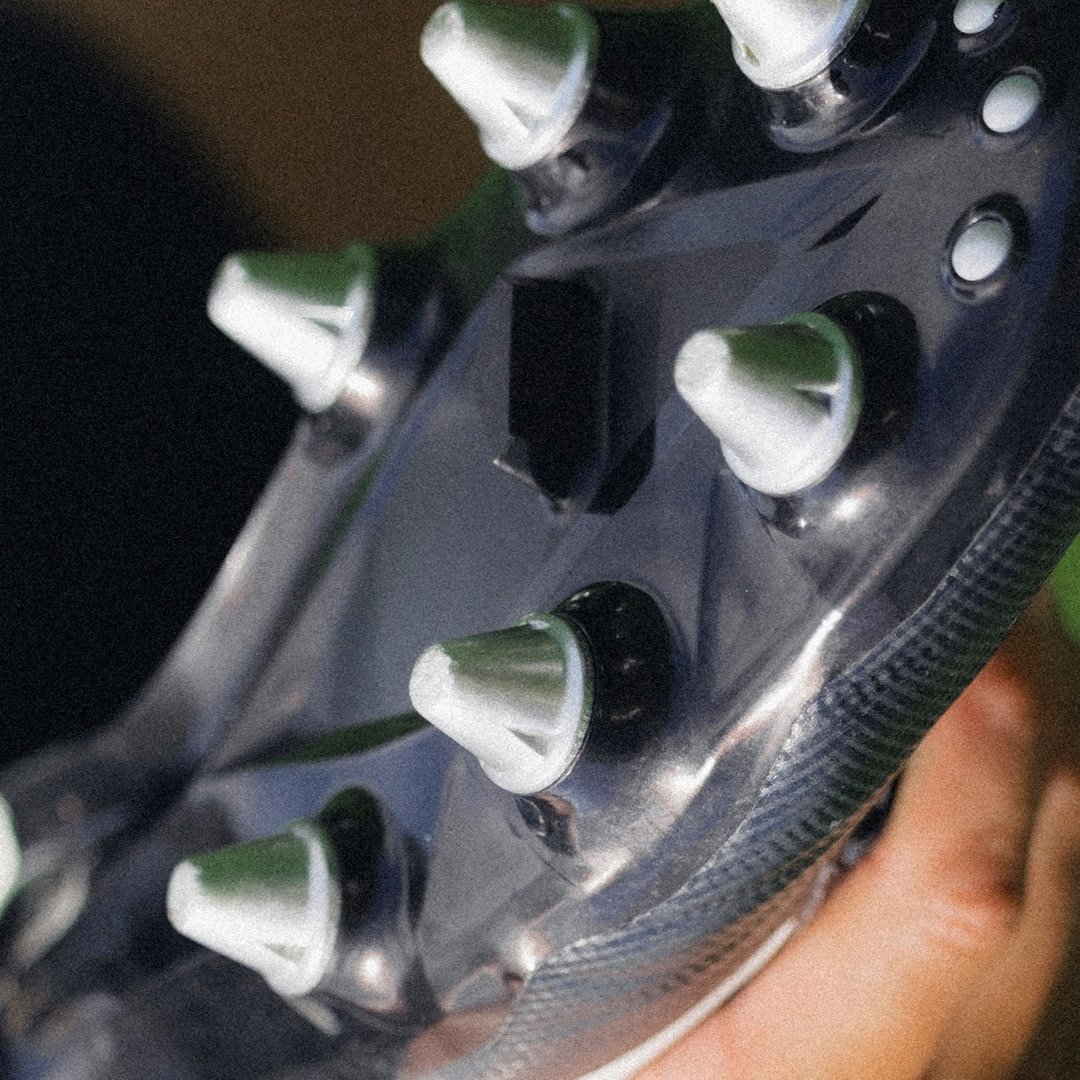Welcome to the ultimate resource for Rugby Boots. Whether you play Rugby Union or Rugby League, your choice of boots is crucial for your performance, comfort, and safety on the field.
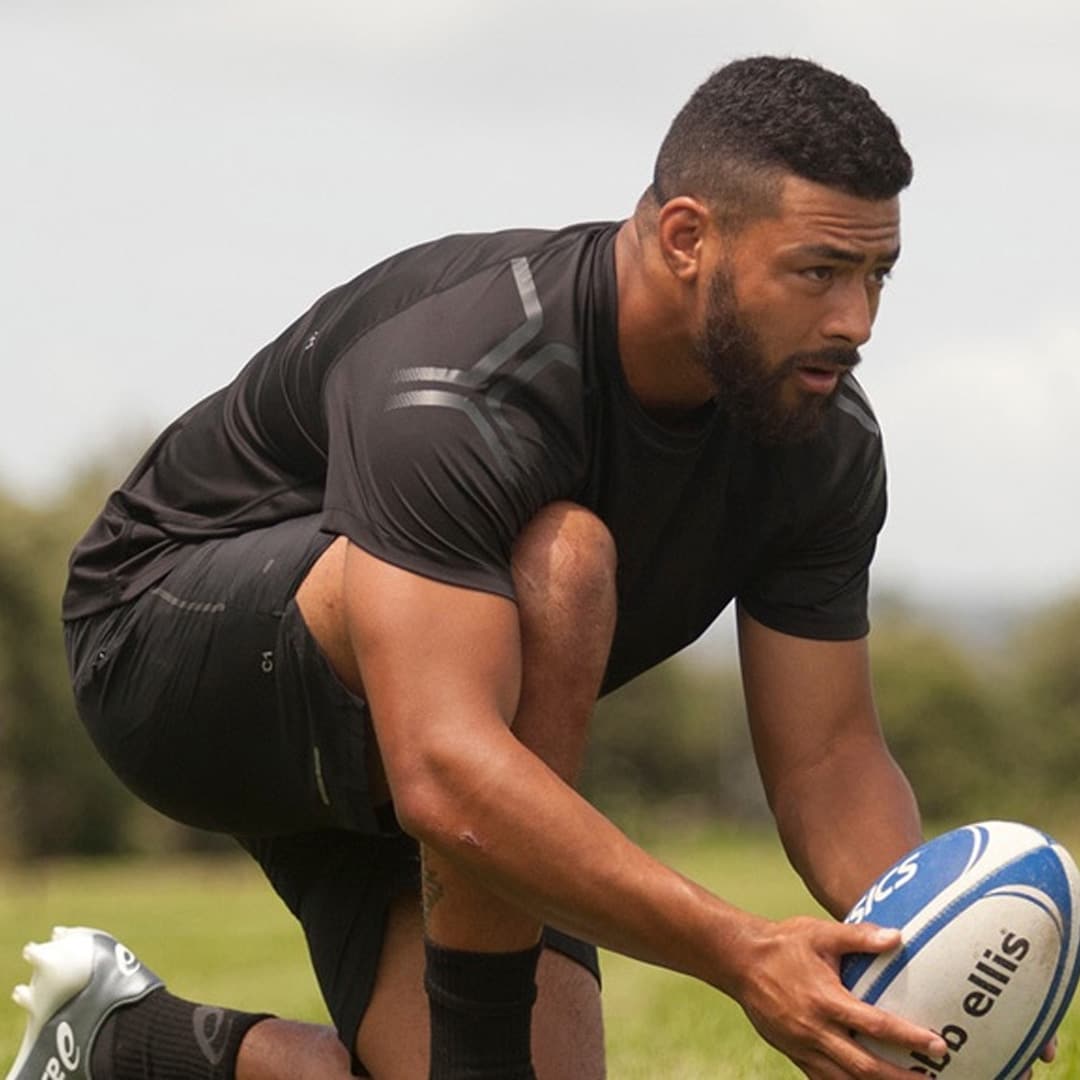

Rugby boots today come in all shapes and styles—whether you’re a forward who prefers the classic high-cut feel or a back looking for something lightweight and football-inspired to boost your speed. Big names like Nike, adidas, and Puma are everywhere, but you’ve still got dedicated rugby brands like Canterbury and Gilbert holding strong, and Mizuno has really carved out a niche, especially in the fast-paced world of sevens.
On this page, we dive into:
- A brief history of rugby boots
- How to choose the right pair for your position and playing style
- In-depth reviews of leading brands; Nike, adidas, Puma, Canterbury & Gilbert
How to Choose Boots For Rugby
Before exploring brands, it’s critical to understand how to choose your rugby boots.
- Position: When I’ve played up front, I always looked for boots with solid ankle support—something that could handle the pressure of scrums and all that close-contact stuff. But when you’re out in the backs, it’s a different game. You want something lighter, more flexible, so you can really move—cut, sprint, sidestep. It all depends on where you’re playing and what feels right for you, often in the backs, you can use just a simple pair of football boots, forwards often require something more rugby specific.
- Fit: You’ll want a snug fit to keep your feet secure, especially when making quick side steps or sharp turns. But trust me—if they’re too tight, you’ll be dealing with blisters in no time, and that’s the last thing you need on game day.
- Weight: If you’re all about speed, lightweight boots can really help you stay quick on your feet. But if you’re in the thick of the action and need that extra protection and support, especially in tackles, a slightly heavier pair might be the better call. I truly believe it’s all about finding what works best for your game.
- Stud Configuration: When I’m playing on a wet, muddy pitch, I go for those metal soft ground studs—they give way better grip. But on dry, firm ground, I’m better off with the moulded plastic firm ground studs so I’m not slipping or sinking into the turf. It makes a big difference for me, the wetter the pitch the longer a metal stud you will need, at least in the pack, for more traction in scrums, rucks & mauls.
- Durability: Think about how often you’re actually playing and what you’re willing to spend. If you’re out on the pitch a lot, it might be worth investing in a higher-quality pair—they usually last longer and feel better overall. But if you’re just playing casually or now and then, a more budget-friendly option could still do the job just fine.
Different boots for different positions
Traditional rugby boots are very similar to football boots, but the thing that makes them different is a high cut designed to give extra support to the ankle and the longer studs. However, more and more players prefer to use football style boots, especially backs, who favour the low cut for extra mobility. So it’s important to understand what position you’re playing before choosing what kind of rugby boot you want.
BACKS





FORWARDS





It’s important to understand the shape of your feet and your running style. Find out whether you’re flat-footed or have a high arch. Ideally rugby boots will fit snugly, although if your feet are still growing it’s advisable to allow a little bit of room. Personally, I have relatively wide feet, so I need rugby boots that have either a wide last or have a relaxed fit/upper that stretches nicely. And I usually play at the back—a lightweight pair definitely suits me more.
Different players prefer different fits. As forwards rely on lower body strength for power in scrums, they need extra support around the ankle to help prevent foot injuries so go for a high ankle cut for extra support in scrums. Though I think it must be said these are harder to come by with the latest boots being more for style and developments of football boots, meaning more and more silos are going for a lower cut, that means you have to get a rugby style boot and perhaps go with a rugby boot brand.
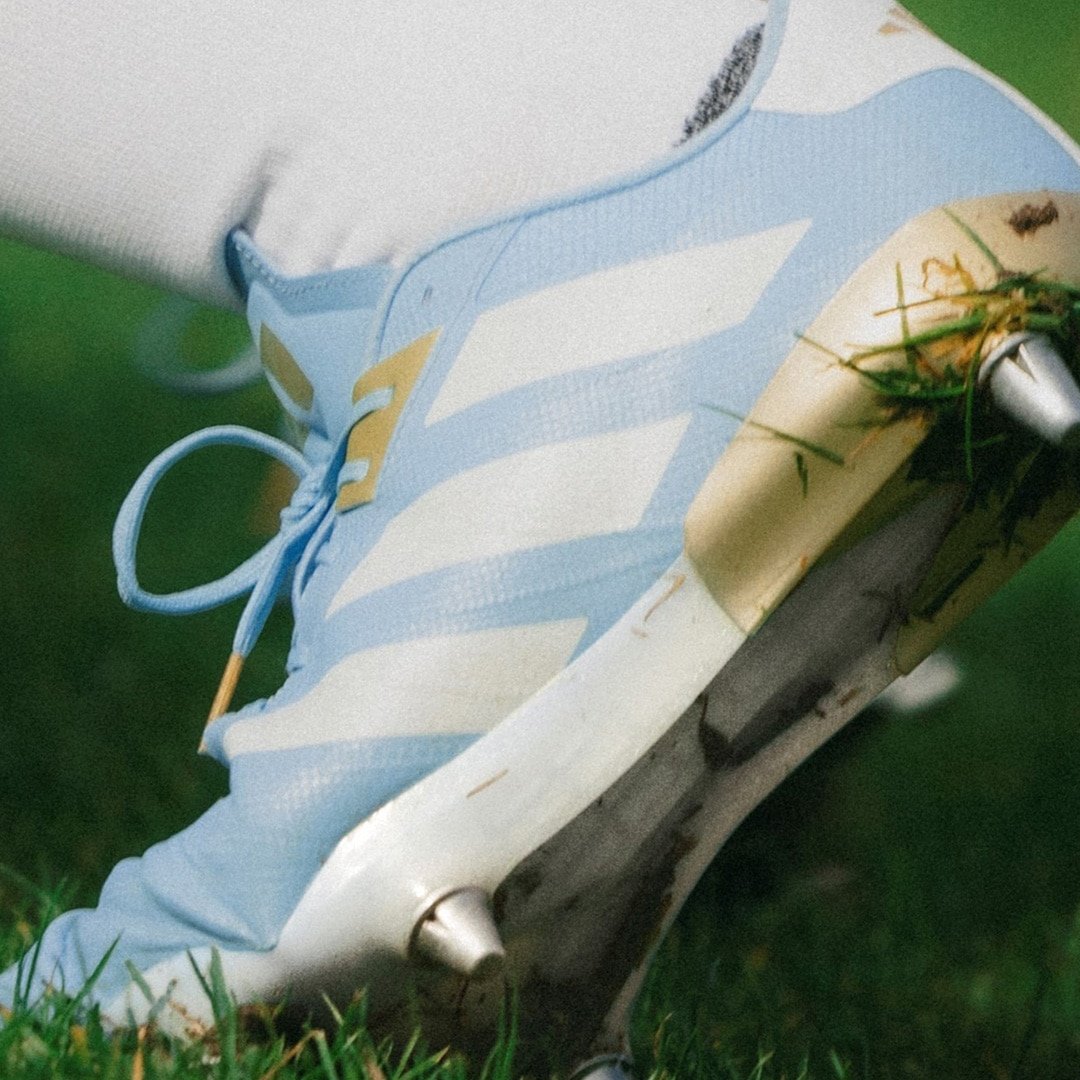

When kickers a tight-fitting boot can give you a better feel for the ball, which you can combine with a football style low cut boot for mobility, some boots like the adidas Predator have extra technology laid onto the boot for increased power for kicks or a sweet spot. Be more concerned with finding boots that fit you than those which look the flashiest, as you will stand out because of your ability rather than the boots you are wearing.
| TOP RUGBY BOOTS | |||
|---|---|---|---|
| Boot | Why? | Boot | |
1.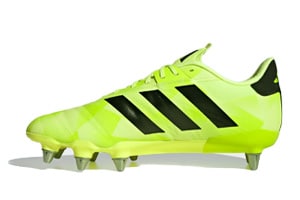
adidas Kakari RS | Good balance of lightweight comfort and strong traction for forwards | 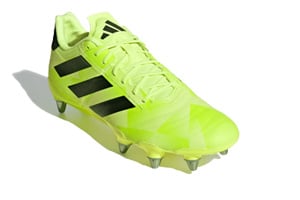
| |
2.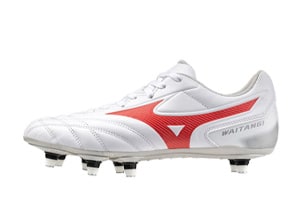
Mizuno Waitangi | Combination of features deliver stability, comfort and drive in the front row | 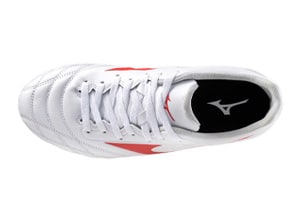
| |
3.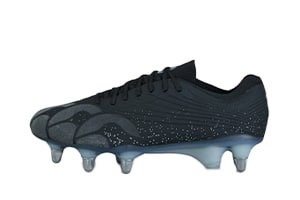
Canterbury Stampede | Classic rugby boot build from a trusted rugby brand | 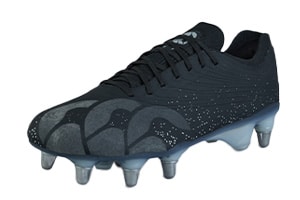
| |
4.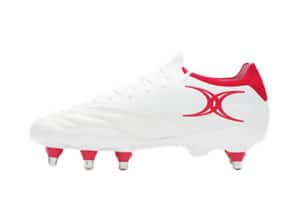
Gilbert Icon Players | For forwards who engage in high-contact situations and require a boot that delivers both power and agility | 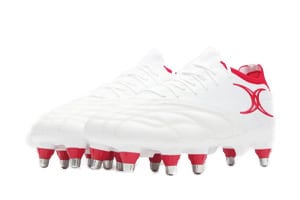
| |
5.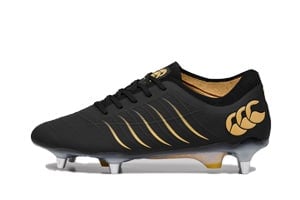
Canterbury Phoenix | Able to dominate close quarters and still dart off the back of the scrum | 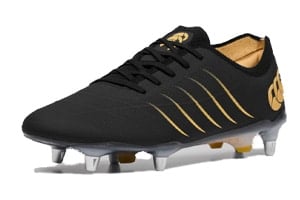
| |
6.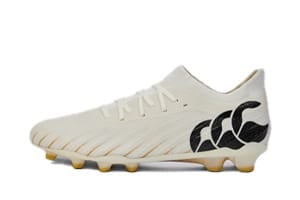
Canterbury Speed Elite | Delivers elite-level lightness, explosive propulsion, and locked-in comfort | 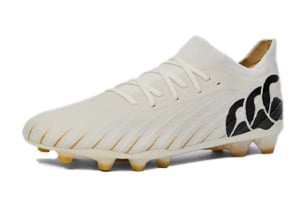
| |
7.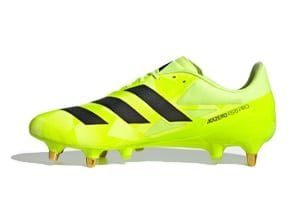
adidas RS15 | Combines featherlight speed, rock-solid traction, and pinpoint control | 
| |
8.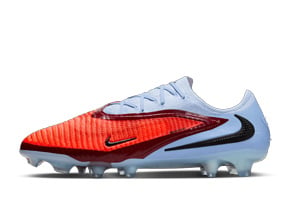 Nike Phantom 6 | Sticky Gripknit upper gives you that added sensation of enhanced ball control | 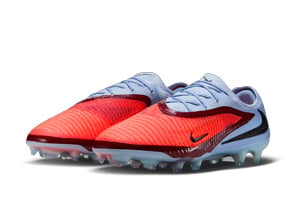 >> Get Elite Phantom 6 at Nike >> Get Elite Phantom 6 at Nike | |
9. adidas Predator 2025 | Ball grip at its best in a pair of boots thanks to the Strikeskin elements | 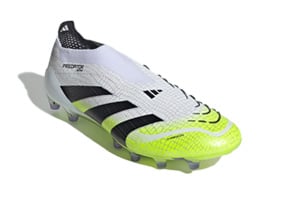 | |
10.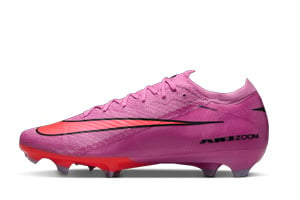 Nike Mercurial | Unique underfoot sensation because of the proprietary 3/4 Zoom Air unit | 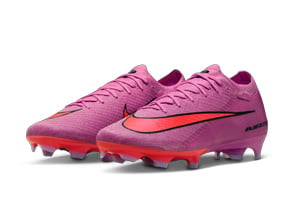 >> Get Elite Mercurial Superfly 10 at Nike >> Get Elite Mercurial Superfly 10 at Nike | |
11.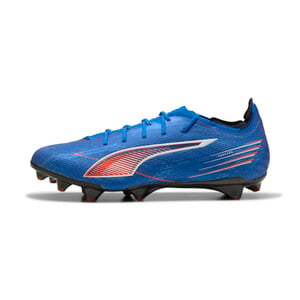
Puma Ultra 6 | Wild snapback thanks to its carbon-based Speedsystem outsole |
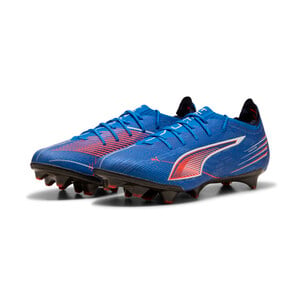 >> Get Puma Ultra 6 Carbon
>> Get Puma Ultra 6 Carbon | |
12.
Mizuno Alpha | Nails down the lockdown category through the interplay of its upper and inner tech | 
| |
13.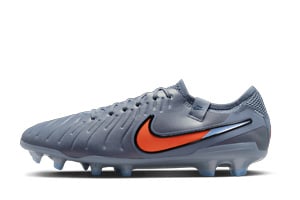 Nike Tiempo Legend | Pliability of leather with the durability of synthetics | 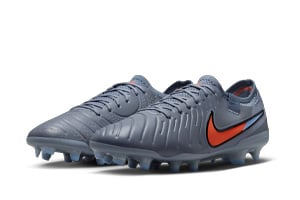 >> Get Elite Tiempo Legend 10 at Nike >> Get Elite Tiempo Legend 10 at Nike | |
Best Rugby Boots for a Fly-half: Precision, Control, and Game Management
The fly-half acts as the tactical hub of a rugby team, responsible for dictating play, distributing passes, and taking charge of kicking for territory under pressure. Because of this, they demand boots that offer precision, agility, and confidence in execution. A poor choice of boot risks slowing footwork, compromising kicking accuracy, or increasing the likelihood of slips during key moments.
To fulfill the demands of the position, several core boot characteristics are needed for fly-halves:
- Lightweight construction to facilitate rapid movement, sharp turns, and minimal fatigue
- A secure, adaptive fit so the boot moves with the foot and avoids internal slipping
- A clean, accurate striking surface to ensure consistent ball contact during kicks
- Balanced traction that offers grip when running or planting but allows rotation without the studs catching
- Comfort features (cushioned insoles, breathable materials, good internal padding) to help the fly-half maintain composure and performance over the course of a match
Additionally, because the fly-half is so intimately tied to kicking performance—whether for conversions, chips, grubbers, or tactical territorial kicks—the boot must support controlled power transfer and deliver a crisp, reliable feel on the ball. Field conditions (soft ground vs firm ground) also matter, so having appropriate boots for varied playing surfaces is considered smart for players at this role.
Best Rugby Boots for Wingers: Speed, Agility, and Finishing Power
Wingers are portrayed as the team’s finishers — usually the fastest players who are tasked with making line breaks, running along the touchline, and scoring tries. Because of this, their footwear needs to support explosive speed, agility, and stability. They often have to beat defenders in one-on-one situations or chase kicks at full speed, so their boots must help rather than hinder.
To succeed in that role, some key requirements need to be highlighted for winger boots:
- Ultra-lightweight construction is essential so wingers can accelerate quickly, maintain top speed, and make sharp directional changes without dragging extra weight.
- A snug, adaptive fit is critical to lock the foot in place, avoid internal slippage during fast cuts, and allow confident side-steps or pivots.
- Strong grip/traction is necessary for forward thrust and lateral moves. Stud configurations must provide propulsion, multi-directional stability, and even pressure distribution to prevent discomfort. On soft ground, longer studs help, while on firm ground, shorter molded studs improve speed and rotation.
- Comfort features (cushioned insoles, breathable linings, anti-blister materials) help wingers maintain performance through the match, especially because they cover considerable ground at high speeds.
- Even though wingers aren’t usually the primary kickers, they often chase or field kicks, execute flick passes, or chip in quick phases. Thus, having a clean striking surface and some degree of control in the boot is beneficial.
- The boots should also be adaptable to playing conditions — owning both soft-ground and firm-ground variants is recommended to suit different pitch states.
In short: wingers demand boots that maximize speed, support agile movement, provide reliable traction, and remain comfortable over 80 minutes — all while not impeding their role as finishers and kick-chasers.
Best Rugby Boots for a Full-Back: Vision, Speed, and Complete Control
The rugby full-back is a hybrid role combining defense, attack, and strategic oversight. The full-back is often the last line of defence: they must read opposition threats, organise the defensive line, make crucial one-on-one tackles, and field high kicks under pressure. In attack, they act as strike runners, launching counter-attacks or joining the line, and through kicking (clearance kicks, tactical chips, grubbers) they help relieve pressure and exploit space. Because of this, their boot choice must support a range of responsibilities.
To meet these demands, the boots for a full-back need to balance a number of features:
- Lightweight construction: so the player can accelerate quickly, keep up with fast play, recover position, and join attacking moves without being hindered by boot weight.
- Secure, adaptive fit: to provide stability when leaping, changing direction, or contesting high balls, preventing slipping inside the boot under dynamic movements.
- Clean striking surface: for accurate kicks—whether for clearance or tactical plays. A smooth, firm upper and stable foot positioning are key.
- Versatile traction: stud layouts that allow quick pivots, controlled stops, launches from standstill, and directional changes. Traction must support both defense and attack across the field.
- Comfort over 80 minutes: cushioning, internal linings, and materials that prevent blisters or fatigue are important so the full-back remains mentally sharp and physically present in all phases of the game.
- Adaptation to pitch conditions: having the appropriate boot (soft-ground or firm-ground variant) helps full-backs perform under various weather or surface states.
In essence, the full-back role is one of balance: they need boots that don’t sacrifice speed for stability or precision for comfort, because their role is so multidimensional.
Best Rugby Boots for Centres: Power, Pace, and Precision
Centres are depicted as a true hybrid in rugby, needing to balance the physicality of forward play with the speed, agility, and finesse of the backs. They’re expected to deliver powerful runs into contact, break tackles, shift their direction sharply, defend robustly in midfield, and sometimes contribute with tactical kicks. Because of this, their boots must reconcile quite divergent demands.
Some of the key attributes centres need (and therefore what their footwear should support) include:
- Lightweight agility — to burst through gaps, evade defenders with sidesteps, and change direction readily
- Secure fit / lateral stability — so that during sharp cuts or evasive moves the foot doesn’t slide inside the boot
- Durability in contact — centres make and take heavy collisions, so boots should have reinforcement in high-stress zones (toe caps, strong stitching, resilient materials)
- Balanced traction — the stud layout must provide grip under running loads and allow for multidirectional movement (cuts, pivots)
- Comfort for sustained high intensity — cushioning, internal lining, and preventative features to reduce blisters or discomfort over a full match
- Kicking capability — while not always primary kickers, modern centres may deliver grubbers, chips, or even place kicks; thus a clean striking surface and firm structure help when kicking is required
Overall, the centre’s role is one of versatility: they confront defensive duties, ball-carrying attack, line breaks, and occasional kicking, so their boots must blend strength, finesse, and adaptability.
Best Rugby Boots for a Scrum-half: Proper Selection for Rugby’s No. 9
The scrum-half is described as the engine of the team — the vital link between forwards and backs, orchestrating play from the base of the ruck or scrum. Their role demands speed, precision, and constant awareness, as they dictate tempo, deliver crisp passes, and execute quick kicks under pressure. Because they operate in tight spaces and at high tempo, their boots must enhance responsiveness, agility, and control.
To meet these demands, the ideal scrum-half boots should feature:
- Lightweight construction to allow explosive acceleration, quick changes of direction, and effortless movement around breakdowns.
- A snug, stable fit that prevents the foot from slipping inside the boot during sudden pivots or bursts, maintaining balance and precision in passing and kicking.
- Reinforced structure (especially around the toe or heel) to provide durability and protection during close-quarter play without adding unnecessary bulk.
- Clean striking surface for consistent ball contact when performing box kicks, grubbers, or tactical chips.
- Multi-directional traction that supports rapid acceleration, stopping, and pivoting across soft or firm ground.
- Comfort and cushioning to sustain sharp footwork and decision-making throughout the match.
In summary, the scrum-half’s role blends the speed of a back with the toughness of a forward — so their boots must strike the perfect balance between agility, stability, and control, supporting every quick pass, dart, and kick that defines the position.
Best Rugby Boots for Props: The Ultimate Guide to Front Row Footwear Props
The prop is portrayed as one of the most physically demanding roles on the rugby field, anchored in the scrum and constantly engaged in contact zones. Their boots need to withstand extreme forces, maintain stability under pressure, and protect against injury, especially in situations where footing, torque, or collapsing scrums could cause ankle or foot damage.
To support these demands, ideal prop boots should include:
- Maximum stability under pressure — A wider base and rigid soleplate help prevent foot roll and ensure a strong, stable platform for pushing in the scrum.
- Solid ankle support — Because props are vulnerable to ankle strains or torques, many prefer mid-cut or high-cut designs, padded collars, and stiff upper structures for protection and restraint.
- Durable materials — The upholstery must resist abrasion, tearing, and deformation. Reinforced synthetics, leather overlays, strong stitching, and protective overlays are key for longevity.
- Aggressive stud configuration — Metal, replaceable studs (especially for soft ground) with patterns that give grip in all directions. Even pressure distribution across studs reduces “stud pressure” pain.
- Comfort and secure fit — Despite the heavy demands, the boot must still fit well: cushioned insoles, smooth lining, and effective lacing systems help maintain comfort and prevent internal slipping even in prolonged contact zones.
- Adaptation to ground conditions — Props should ideally have variants (soft-ground vs firm-ground) because ideal traction differs significantly depending on wet or dry pitch surfaces.
In short: props need boots engineered for strength, stability, traction, and protection. Their footwear must support immense pushing loads, resist lateral forces, and maintain secure footing in scrums—while still being comfortable enough to wear through a full game.
Best Rugby Boots for a Hooker: The Ultimate Footwear Guide to Rugby’s No. 2
The hooker is a uniquely demanding role that combines front-row scrummaging, technical set-piece skills (especially lineout throws), and open play involvement (rucks, carries, tackles). Their boots must support these varied responsibilities by providing both strength and agility.
To succeed, the ideal boot for a hooker should include:
- Stability and support in scrums: a rigid, supportive soleplate and a wide base help prevent foot roll and maintain footing under heavy pressure.
- Ankle protection: because the front row is prone to collapsing scrums and awkward contact, many hookers favor mid-cut or high-cut designs that stabilize the ankle in congested or unstable situations.
- Durable construction: the boot must resist abrasion, deformation, and tearing. Reinforced uppers, strong stitching, overlays, and resilient synthetics or leather help maintain structure through intense contact.
- Reliable grip and traction: hooks must maintain grip when engaging scrums, pivoting for lineout throws, and moving around breakdowns. Long metal studs (for soft ground) or a stud layout that distributes load evenly are preferred.
- Comfort over match duration: cushioned insoles and soft internal linings help absorb impact and reduce fatigue or the risk of blisters, which is essential given the physical load hookers carry.
- Kicking / striking surface: while not their primary role, hookers sometimes perform short kicks, grubbers, or flick passes. A clean striking zone helps deliver more consistent contact when needed.
Long story short: hookers need boots built for power, durability, stability and technical precision, bridging the gap between tight-forward demands in scrums and dynamic responsibilities in open play.
Best Rugby Boots for Locks (Second Row): Power, Height, and Total Stability
Locks are described as the “tall timber” and engine room of a rugby pack. Their role centers on two critical areas: lineouts and scrums. They must win the ball in the air, contest restarts, and provide raw pushing force in the scrum. At the same time, they carry the ball into contact, defend strongly, and contribute in tight phases. Because of that, their boots must balance power, stability, and durability.
Key boot attributes for locks should include:
- Maximum stability and support: A rigid soleplate and a wide base are needed to transfer leg drive effectively during scrummaging without twisting or loss of balance.
- Exceptional traction: Stud configurations should allow explosive grip, whether launching into a lineout jump or pushing in mauls. On soft ground, longer studs are preferred; on firmer ground, shorter molded studs help reduce “stud pressure” pain.
- Ankle support: Mid-cut or high-cut boots are recommended to help protect the ankles during the dynamic stresses of scrums, mauls, and awkward landings from jumps.
- Durability: Since locks engage in heavy contact, boots must be built tough—reinforced uppers, strong stitching, and robust materials ensure the gear holds up over repeated collisions.
- Comfort over long matches: Cushioned insoles, smooth internal linings, and breathable materials help reduce fatigue and foot pain through the match, so the lock can stay effective.
Overall, the ideal boot for a lock must support the demands of both set-piece dominance (scrums and lineouts) and the physical grind of open-play.
Best Rugby Boots for a Number 8: Power, Pace, and Total Control
The Number 8 is a hybrid forward who must combine strength with mobility. Their role includes anchoring the scrum, carrying the ball powerfully, acting as a link between forwards and backs, defending, and contesting in the loose. As such, their boots must cater to both the physical demands of forward play and the agility demands of open-field running.
The keys for perfect Number 8 boots must have:
- Strength & stability for scrums – a rigid soleplate and wide base to prevent slipping under pressure and help transfer leg power efficiently.
- Lightness for running – the boot must be light enough to allow bursts off the scrum, support dynamic ball carrying, and not hinder movement in attack.
- Secure, locked-in fit – prevents foot movement inside the boot during pivots, side-steps, and accelerations.
- Durability – reinforced uppers, strong stitching, and overlays to withstand contact, tackles, and rucks.
- Reliable traction – stud patterns that support both push-offs in scrums and mobility in open play; longer studs for soft ground, molded or hybrid setups for firm surfaces.
- Comfort over the full match – cushioned insoles, smooth linings, and breathable materials help reduce fatigue and maintain performance.
So the Number 8’s boot must balance power and mobility seamlessly — offering enough structure and grip for tight play while remaining light and responsive for open-field work.
Best Rugby Boots for Flankers: Speed, Power, and Relentless Work Rate
Flankers are the workhorses of the team — constantly involved in tackling, contesting breakdowns, supporting attack and defence, and covering ground. Because they’re everywhere on the field, their boots must meet the dual demands of agility and resilience.
For flankers, they need boots that have the following:
- Lightweight construction — to support fast acceleration, quick breaks, and sustained high energy over the match
- Secure fit / lockdown — to prevent the foot from slipping inside during sharp cuts, tackles or transitions
- Durability & protection — reinforced areas (toe caps, strong stitching, robust uppers) so the boot holds up under constant contact, rucks, and tackles
- Excellent traction — multi-directional stud layouts that grip in scrums, rucks, and open play; longer studs preferred on soft ground
- Comfort over 80 minutes — cushioned insoles, breathable materials, and low stud pressure to reduce fatigue and discomfort
Flankers need boots that are versatile—able to cope with heavy physical contact, quick directional changes, and high mileage—without compromising on speed and support.
Nike Rugby Boots & Why Players Wear Them
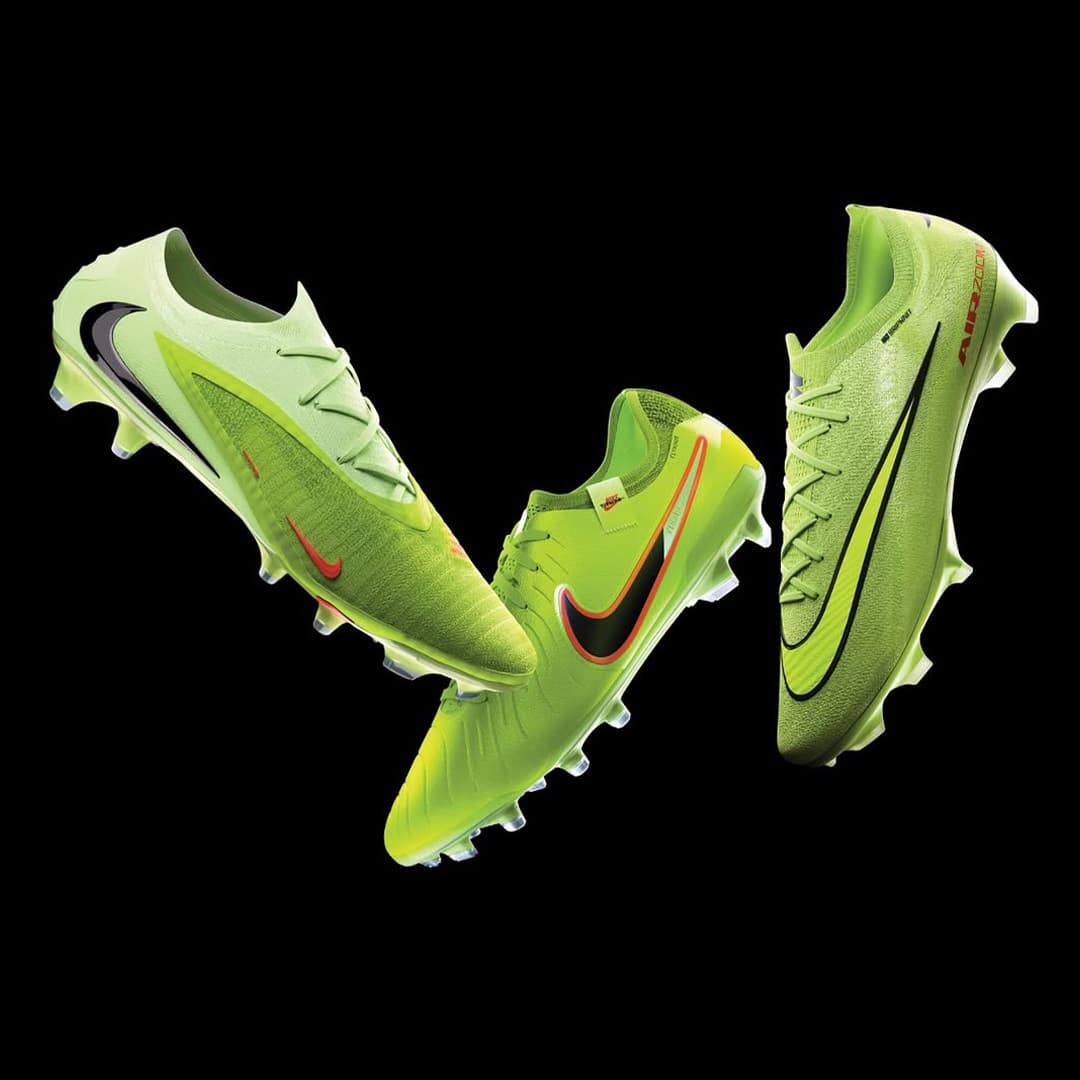

Nike might be known mainly for football boots, but honestly, a lot of their models work really well for rugby too—especially if you’re a back or a more mobile player who’s all about speed and agility. I’ve seen (and worn) a few myself that feel amazing on the pitch. Their boots usually come with:
- Lightweight synthetic uppers that make quick footwork feel effortless.
- Flyknit tech that gives you that snug, sock-like fit—it really locks you in.
- Aggressive stud patterns that help with sharp cuts and bursts of pace.
They’re super popular with wingers, centres, and full-backs who want that explosive traction and lightweight feel. And honestly, you’ll see loads of players rocking them—some because they’ve got brand deals and get hooked up by Nike, but plenty just buy them on their own because they’re easy to find and perform really well.
Nike Mercurial are designed for straight line speed, the Vapor is one of the most popular boots, whilst the Tiempo has in the past seen a lot of rugby player favour them, they are a now a synthetic rather than natural leather boot, finally the Phantom which is more focused to football & doesn’t really suit rugby players, I don’t recall seeing many players in these, the soleplate designed for rotational traction doesn’t help here.
adidas Rugby Boots
adidas & Rugby: A Longstanding Partnership
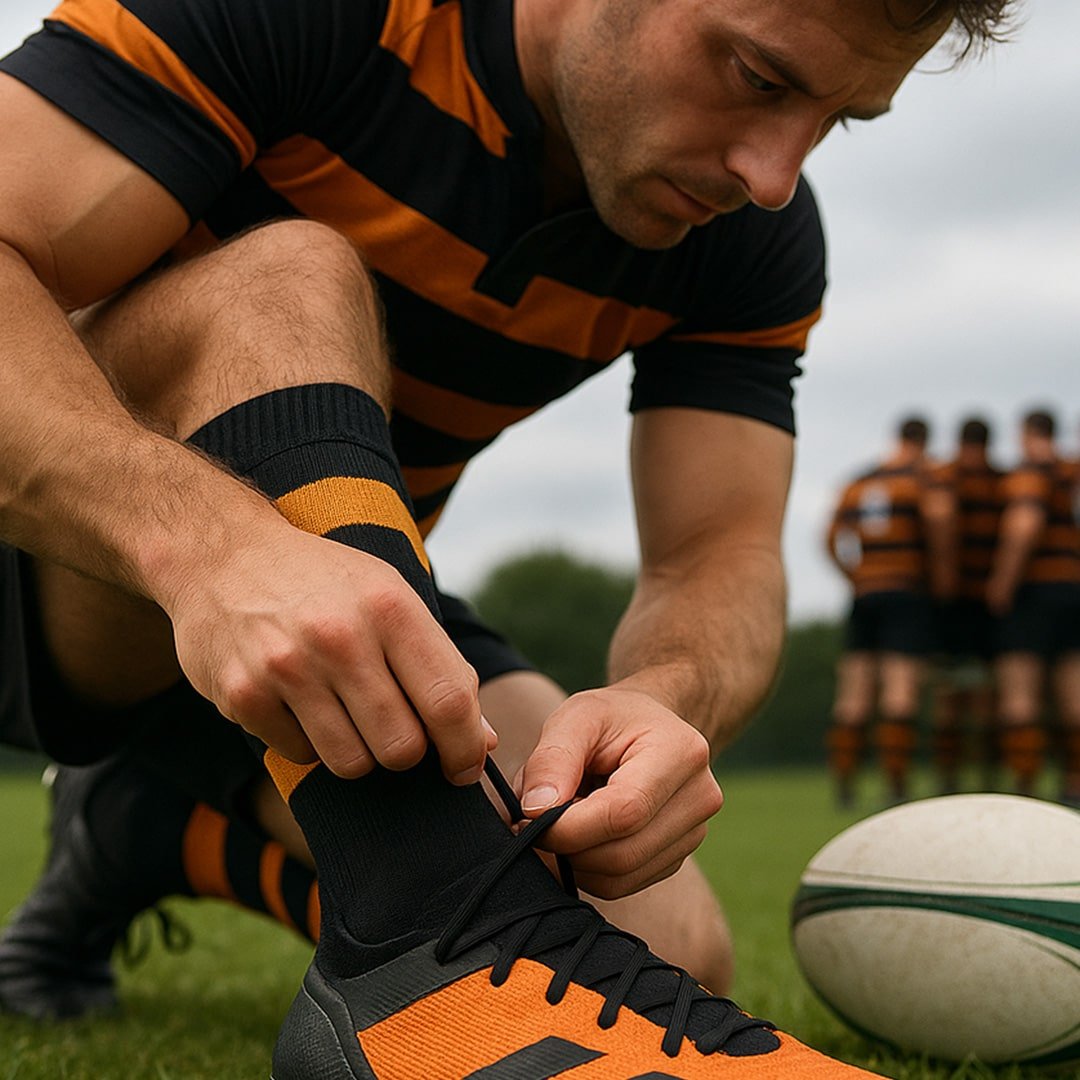
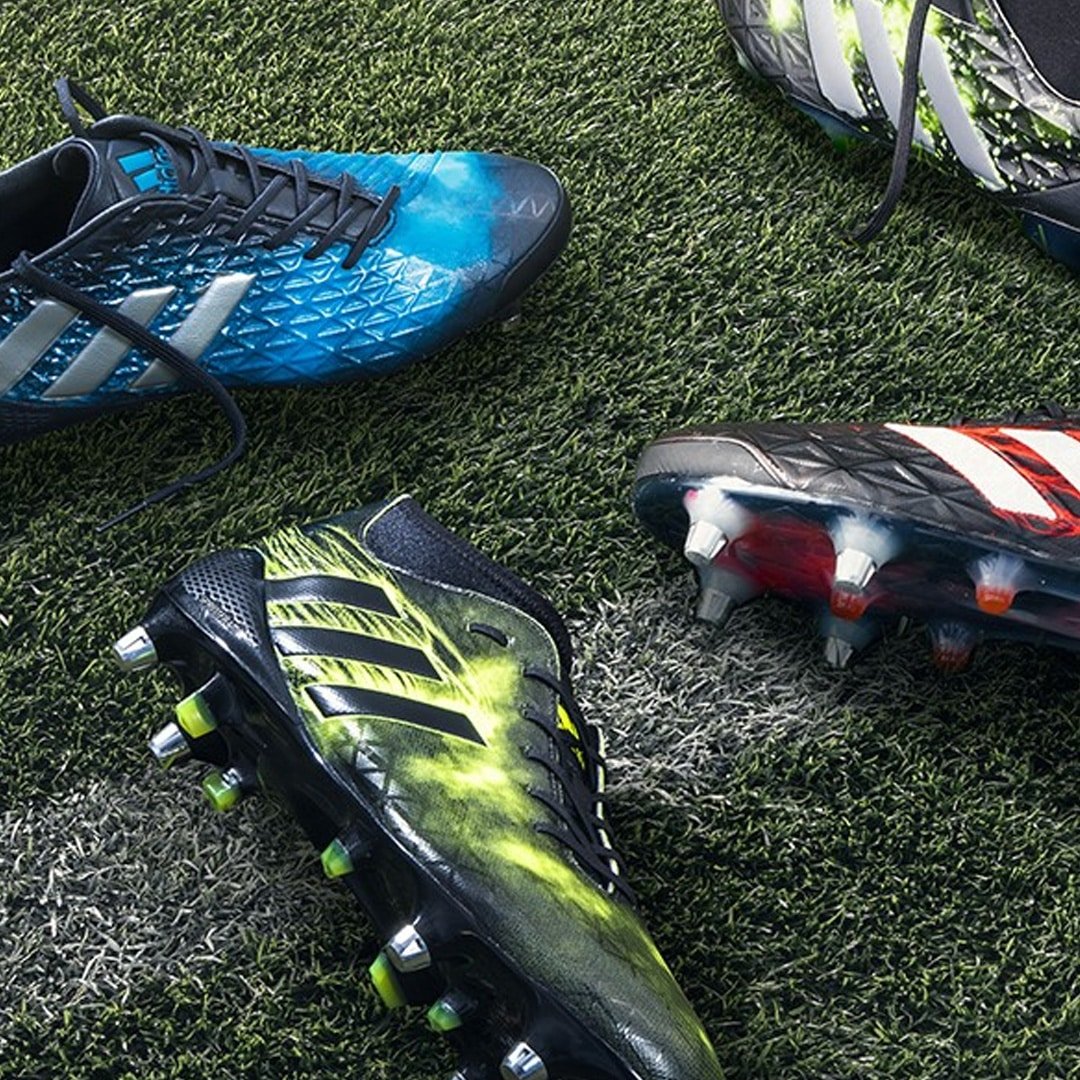
Adidas has really cemented itself as a go-to brand for serious rugby players—and for good reason. Unlike a lot of other brands that just tweak football boots for rugby, adidas actually designs boots specifically for the game’s unique demands, which is something I really appreciate. Many of their boots are designed with:
- Reinforced uppers that hold up in scrums and rucks (because let’s be real, those take a toll on your boots), and built for different models based on your position. If you’re a forward, you’ll find sturdier, more supportive boots to keep you stable in close contact. And if you’re a back like me—or someone who likes to stay light on their feet—they’ve got flexible, lightweight options that won’t hold you back.
- Tech that is seriously impressive too. The Predator zones? Great for improving your kicking game. Their stud patterns give you that extra grip when taking off or changing direction, and the synthetic uppers strike a nice balance between agility and protection.
As such, I have observed that adidas is a go-to for many professional players seeking boots built for rugby-specific demands. Whether you’re locking heads in the scrum or burning down the wing, adidas has a boot that’ll suit your style—and that’s why you’ll see so many pros sticking with them.
Puma Rugby Boots

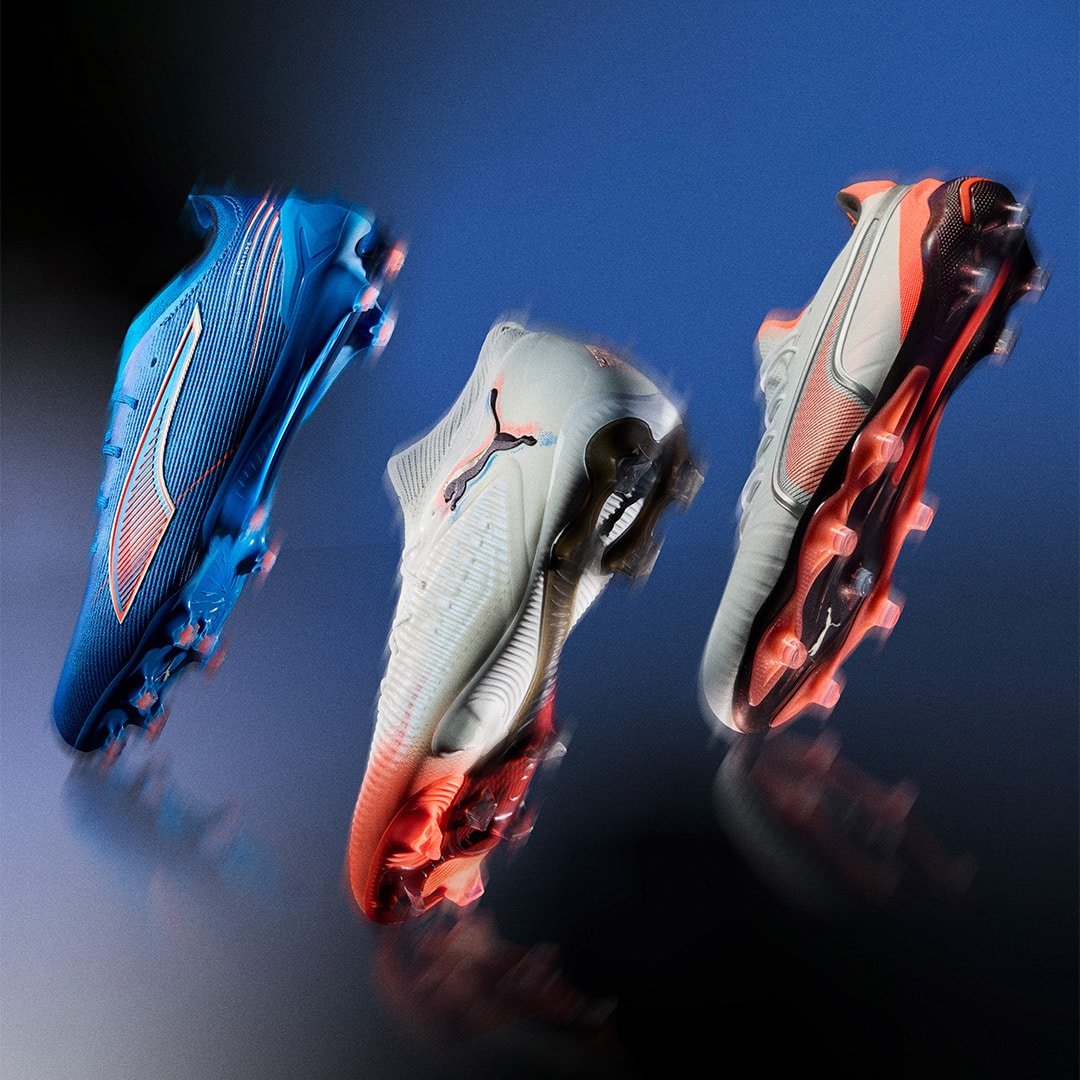
Puma’s presence in rugby has really grown lately, especially among backs and players who rely on speed. What I like about their boots is that:
- They’re lightweight, taking a lot of cues from football boot designs, which makes them great for quick movers.
- They strike a nice balance between speed and durability—so you’re not sacrificing toughness for agility.
- Plus, Puma often offers high-performance boots at prices that won’t break the bank.
A lot of players I know go for Puma when they want something that looks sharp on the pitch but also helps them stay quick and agile.
Canterbury Rugby Boots
Canterbury is one of those classic rugby brands everyone knows and trusts. What I really respect about them is how they focus purely on rugby—no compromises:
- Their boots are built tough, with strong construction made to handle all the heavy forward play.
- They also offer wider fits, which is great because rugby players often need that extra room compared to regular football boots.
- They use durable synthetic materials that can take a beating in those intense, high-contact moments.
If you’re someone who values reliability and wants boots that can stand up to the hard stuff, Canterbury’s probably going to be right up your alley.
Mizuno Rugby Boots
Rising Popularity in Rugby Sevens and Speed Players
Mizuno might be better known for athletics and football, but they’ve definitely been making waves in rugby too—especially in Sevens. What stands out about their boots is:
- How lightweight and high-quality they feel, whether they’re rocking synthetic or leather uppers.
- The fit is just spot-on, offering great comfort that really makes a difference when you’re moving fast.
- Their stud configurations are clearly designed with explosive acceleration in mind, helping players get those quick bursts off the mark.
If speed and precision are your priorities, it’s no surprise that a lot of players swear by Mizuno boots.
Gilbert Rugby Boots
A Rugby-focused Brand of Performance Footwear
Gilbert has a long history in rugby gear, so their designs benefit from experience. Having been around since the 1800s, the brand has seen the sport evolved throughout the centuries. This has caused them to also adapt their rugby boots to the modern game.
- Decent “bang for buck” particularly in mid-to-high tiers: you get good tech, durability, comfort.
- Strong performance especially for players in forward or mixed roles; those who need grip, stability, power in contact as well as decent agility.
- While Gilbert has lighter models, their more heavy-duty boots (especially leather ones, or those with many studs) tend to be heavier.
It’s easy to imagine that rugby traditionalists would always go for the brand that was there at the start of rugby’s inception.
Asics Rugby Boots
Asics has built a solid reputation for comfort and stability across all kinds of sports, and their rugby boots definitely carry that forward:
- They pack in gel cushioning systems that really help absorb shocks, which is a game-changer when you’re hitting the ground hard or getting into heavy contact.
- Whether you’re a forward or a back, Asics boots offer reliable grip and strong build quality that can handle the rough stuff.
- They tend to attract players who want that extra comfort and support underfoot—because let’s face it, rugby’s tough on your feet.
Having All Blacks star Richie Mo’unga as an ambassador says a lot; he’s featured in several ASICS campaigns, like the Movement Coach program and the Menace Challenge, where they highlight his killer kicking skills and training routines in their promotional content and blog features.. It’s clear Asics is serious about performance and comfort on the pitch.
Under Armour Rugby Boots
Under Armour really knows how to blend modern performance with bold, eye-catching designs. Plus:
- Their boots are super lightweight, which makes them perfect if you’re playing in a speed-focused position and need to stay quick on your feet.
- They also come with unique soleplate designs that help with traction, so you can make those sharp cuts and fast moves without slipping.
While they might not be as rugby-specific as some other brands, Under Armour boots still deliver versatile performance that works well for backs and mobile forwards alike. If you’re after something that looks fresh and performs solidly, they’re definitely worth checking out.
History of Rugby Boots
The original football boot first comes into records with Henry VIII in 1526 when he called for a pair of leather football boots. However the man in the street would not yet have had this pleasure as both football and rugby boots did not exist in the early days. In the late 1800’s players were usually wearing walking, working boots or hobnail boots, which would either come with nails or studs protruding. The sports split into their distinctive games of rugby and soccer and at this time also allowed hacking a players legs as a method of stopping them, so some boots would also have had metal tips to inflict more pain.

In 1889 a law change barred the wearing of projecting nails or iron plates, in 1910 further improvements to enhance safety came when changes specified a cylindrical stud no less than 3/4 inch in diameter and no longer than half the diameter long fixed to the sole by 4 nails. The next change occurred in 1926 when studs had to be leather, circular and fixed by at least 3 nails. Rubber was included in 1948, aluminium in 1953 and approved plastics in 1954. Currently rugby requires an approved rugby boot with studs that carry the IRB marking which can be used for both rugby league and rugby union.
Milestones in rugby boot development:
- 1889: Laws banned projecting nails or iron plates for player safety.
- 1910: Studs required to be cylindrical, no smaller than ¾ inch in diameter.
- 1926: Studs had to be leather and circular.
- 1948-1954: Introduction of rubber, aluminum, and approved plastics.
- Modern day: All rugby boots must carry IRB-approved markings for safety in both Union and League.
Traditional rugby boots were high-cut for ankle support, but many players today, especially backs, prefer low-cut football-style boots for added mobility.
Rugby Studs
Boots with screw-in studs are pretty popular because they let you swap out studs depending on the pitch conditions—super handy, right? If the ground’s muddy, you’ll want longer studs to keep your footing solid, but on a dry day, shorter studs usually do the trick. And when the pitch is hard, lots of players go for moulded rubber studs instead. But here’s the thing: rugby’s a full-contact sport, so wearing the wrong studs isn’t just uncomfortable—it can actually hurt you or someone else out there. Referees do check for sharp edges or rough bits on your boots, but honestly, it’s on you to keep your gear in good shape and make sure everything’s safe before you hit the pitch.
